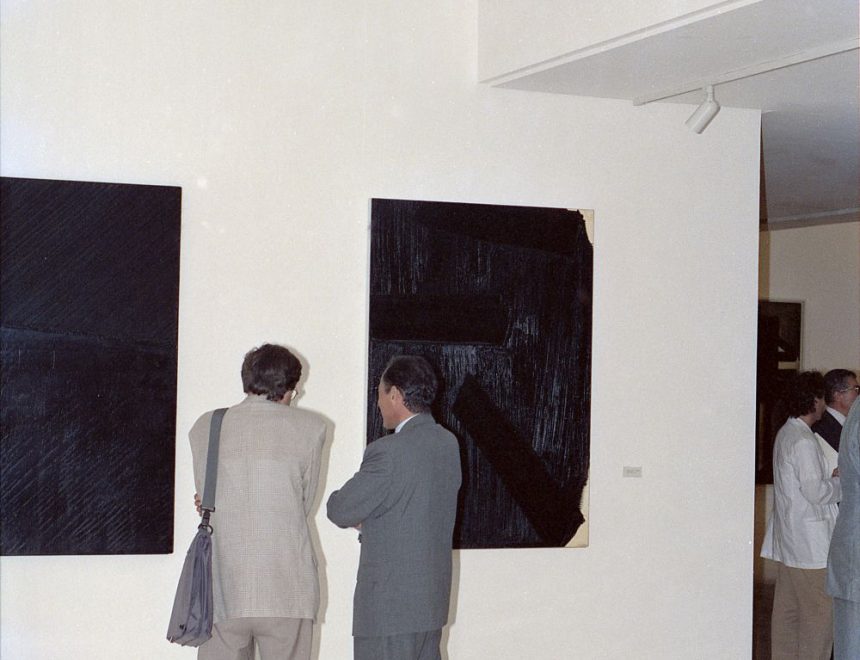Pierre Soulages
Forty Years of Painting
Many accidents of fate have befallen the paintings of Pierre Soulages (Rodez, France, 1919) since his first exhibition in Paris in 1947. His artistic viewpoint seems to incorporate the existential nature of the passing of time, reflected in the smallest – though not innocent – acts of the work of painting. This 1989 exhibition at the IVAM Centre Julio González was preceded by the artist’s exhibition at the Museum Fridericianum, Kassel, where his work was included in the first three editions of the documenta, between 1955 and 1964.
Soulages’ abstract, expressionistic work has been related to what is known as Tachisme, a tendency that showed and exhibited by negating what is said, or what is unsaid. A tache is a stain or mark that covers or may conceal something, but with Soulage, the tache appears to reveal a fear of emptiness; but with Soulages, covering over things seemed to in some way reveal a fear of emptiness. Being stains, they emerged as paintings.
After the sixties Soulages’ painting became eminently black, only interrupted in the following decade when he returned to rhythmic compositions. Black defines a terrain where colour is worked as tension between strokes; through the brushstrokes, light seems to want to emerge, to represent itself and seek references. Good examples of this intention are the large works such as 14 Aout 1979, which is a single stroke nearly three metres long. This exhibition helped recover the figure of Soulages, who had been relegated to oblivion for some time, as a crucial contributor to European abstract art. His work recovers classical canons, processing them through the dark, sincere hue of existentialism.



